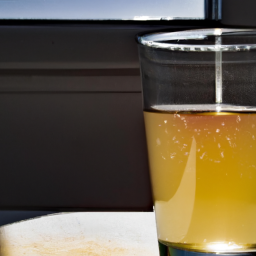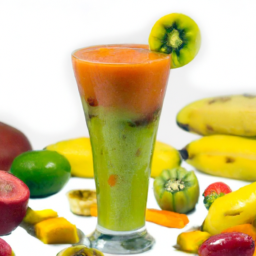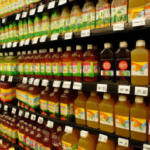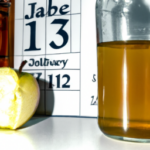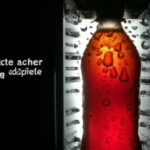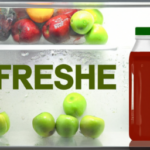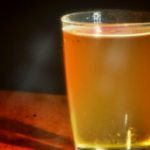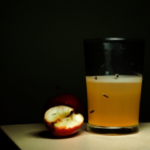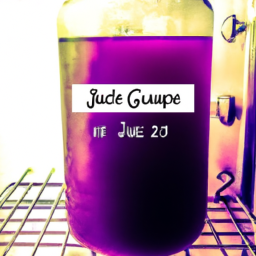As a lover of apple juice, I always make sure to keep my refrigerator stocked with at least a bottle or two. However, sometimes, I may forget to put it back in the fridge after pouring myself a glass or after grocery shopping.
This leads me to wonder, how long can apple juice sit out before it goes bad?
In this article, we will explore the shelf life of unopened and opened apple juice, the difference between pasteurized and unpasteurized apple juice, and the impact of temperature and storage on the shelf life of apple juice. We will also provide tips on how to extend the shelf life of apple juice, how to recognize spoiled apple juice, the health risks of drinking spoiled apple juice, and how to properly dispose of it.
Key Takeaways
- Opened apple juice should be refrigerated immediately after opening to ensure its shelf life and safety.
- Adding lemon juice or vitamin C powder can increase the acidity level of apple juice and extend its shelf life.
- Unpasteurized apple juice retains more natural flavor and nutrients but has a shorter shelf life than pasteurized apple juice.
- Spoiled apple juice can cause food poisoning and health risks, so it’s important to check for signs of spoilage and consume it within 7-10 days after opening.
Shelf Life of Unopened Apple Juice
You’re probably wondering how long you can leave that unopened apple juice sitting in your pantry before it goes bad, right?
Well, the shelf stability of unopened apple juice can vary depending on factors such as the processing method, packaging, and storage conditions. Generally, most commercially produced apple juice has a shelf life of around 12 months from the date of manufacture. This is usually indicated by an expiration date printed on the packaging.
However, it’s important to note that the expiration date is not a guarantee of safety or quality. It’s simply a guideline for optimal freshness and taste.
With proper storage, unopened apple juice can remain safe to consume for several months past the expiration date. Just make sure to keep it in a cool, dry place away from direct sunlight and heat sources.
Now, let’s move on to the shelf life of opened apple juice.
Shelf Life of Opened Apple Juice
Once opened, the clock starts ticking on how much time you have left to enjoy your deliciously crisp and refreshing apple juice. The shelf life of opened apple juice is much shorter compared to unopened ones because once the seal is broken, the juice becomes more exposed to air and bacteria, which can cause spoilage.
The best way to preserve its freshness is to refrigerate it immediately after opening the bottle or carton. This can help slow down the growth of bacteria and delay the spoilage process. Aside from refrigeration, there are other ways to extend the shelf life of opened apple juice.
One is by transferring it to a smaller container with an airtight lid. This can help minimize the amount of air that comes in contact with the juice and reduce the risk of bacterial growth. Another way is to add lemon juice or vitamin C powder to the apple juice. These ingredients can help increase the acidity level of the juice, making it less hospitable for bacteria to grow.
By following these tips, you can enjoy your apple juice for a few more days beyond its initial opening. Now, let’s move on to the next section, where we’ll talk about the difference between pasteurized and unpasteurized apple juice.
Pasteurized vs. Unpasteurized Apple Juice
Refrigeration isn’t the only way to prolong the shelf life of opened apple juice – understanding the difference between pasteurized and unpasteurized can also make a big difference.
Pasteurized apple juice undergoes a heating process that kills any harmful bacteria, ensuring a longer shelf life. However, this process also affects the flavor and nutritional content of the juice.
On the other hand, unpasteurized apple juice is not heated, allowing it to retain more of its natural flavor and nutrients. When comparing the flavor profiles of pasteurized and unpasteurized apple juice, there is a noticeable difference.
Pasteurized juice has a more consistent and uniform taste, while unpasteurized juice has a more complex and varied flavor. Additionally, unpasteurized juice has been linked to potential health benefits such as increased immune system function and better digestion.
However, it is important to note that there is a higher risk of contamination with unpasteurized juice, so it should be consumed within a shorter time frame and purchased from a reputable source.
Moving on to the next section about temperature and storage, it is important to consider how these factors can affect the shelf life and quality of apple juice.
Temperature and Storage
Storing fresh apple juice at a stable and cool temperature can significantly extend its shelf life and flavor freshness. The recommended temperature for apple juice storage is between 32-40°F, which is the same as the temperature range for most refrigerators.
At this temperature, the enzymes in the juice are not as active, which slows down the oxidation process and prevents the growth of bacteria. It’s important to note that once apple juice is opened, it should be refrigerated immediately to prevent spoilage.
Additionally, it’s best to consume opened apple juice within 7 to 10 days, even if it’s refrigerated. To extend the shelf life of apple juice, there are several steps you can take, such as transferring the juice to a smaller container to reduce the amount of air exposure, adding lemon juice to increase the acidity level, or freezing the juice.
How to Extend the Shelf Life of Apple Juice
To keep your apple juice fresh and delicious for a longer period, try these simple apple juice preservation techniques and best storage practices for apple juice.
Firstly, always keep your apple juice refrigerated at a temperature between 32°F and 40°F. This will help slow down the growth of microorganisms and prevent spoilage. Additionally, avoid leaving apple juice out at room temperature for more than 2 hours as it can promote the growth of bacteria and cause the juice to spoil faster.
Secondly, make sure to use a clean and sterilized container to store your apple juice. This will prevent the introduction of harmful bacteria and ensure that your juice stays fresh for a longer period.
Lastly, if you have opened a bottle of apple juice, make sure to consume it within 7 days to avoid spoilage. By following these apple juice preservation techniques and best storage practices for apple juice, you can enjoy your delicious apple juice for a longer period.
To ensure that you are drinking fresh and high-quality apple juice, it’s essential to recognize when it has gone bad. Signs of spoiled apple juice include a sour or off smell, a cloudy appearance, or a change in color. If you notice any of these signs, it’s best to discard the juice as it can cause illness or food poisoning.
By being aware of these tips for recognizing spoiled apple juice, you can enjoy your apple juice without any worries.
Tips for Recognizing Spoiled Apple Juice
Now that we know how to extend the shelf life of apple juice, let’s talk about how to identify spoiled apple juice. It’s important to recognize the signs of spoilage to avoid any potential health risks. Here are some tips to help you identify spoiled apple juice:
Firstly, check the color and texture of the apple juice. Fresh apple juice is clear and has a smooth consistency. If you notice any cloudiness or chunks in the juice, it’s a sign that it’s gone bad.
Secondly, smell the juice. Spoiled apple juice has a sour or musty odor that is noticeably different from fresh juice.
Lastly, take a small sip of the juice. If it tastes off or has a strange aftertaste, it’s best to discard it.
To prevent apple juice spoilage, make sure to store it in the refrigerator after opening and consume it within 7-10 days. Alternatively, you can freeze the apple juice to extend the shelf life.
If you don’t want to risk drinking expired apple juice, there are plenty of other alternatives such as freshly squeezed juice, other fruit juices, or even water. Remember, it’s better to be safe than sorry when it comes to consuming spoiled food and beverages.
Now that we know how to identify spoiled apple juice and ways to prevent spoilage, let’s talk about the potential health risks of drinking it.
Health Risks of Drinking Spoiled Apple Juice
If you drink spoiled apple juice, you could be putting your health in danger, like taking a swim in a murky pond. Spoiled apple juice may contain harmful bacteria that can cause food poisoning and other health risks. It’s important to know how to recognize the signs of spoiled apple juice and take preventive measures to avoid consuming it.
Here are four common symptoms of drinking spoiled apple juice:
- Nausea and vomiting
- Diarrhea
- Abdominal cramps
- Fever
To prevent the consumption of spoiled apple juice, always check the expiration date and the condition of the packaging before purchasing. Once opened, apple juice can sit out at room temperature for a maximum of 2 hours. After that, it should be refrigerated and consumed within 7-10 days. If you notice any signs of spoilage, such as an off odor or color, discard the juice immediately. It’s better to be safe than sorry when it comes to consuming spoiled apple juice.
Now, let’s move on to the next section about how to dispose of spoiled apple juice.
How to Dispose of Spoiled Apple Juice
Disposing of spoiled apple juice properly is crucial for preventing contamination and potential health risks. When apple juice is left out for too long, it can become contaminated with harmful bacteria, leading to food poisoning and other illnesses. So, how can you safely dispose of spoiled apple juice?
First and foremost, never pour spoiled apple juice down the sink or drain. This can contaminate the water supply and harm the environment. Instead, dispose of it in a sealed container and throw it in the trash. If you have a compost bin, you can also dispose of it there. It’s important to note that if you suspect the apple juice may be contaminated, it’s best to treat it as hazardous waste and contact your local waste management facility for proper disposal. To avoid contamination, always check for signs of spoilage before consuming apple juice, such as a change in color, texture, or odor. By properly disposing of spoiled apple juice, you can help prevent the spread of harmful bacteria and protect your health.
| Signs of Contamination in Apple Juice | ||
|---|---|---|
| Change in color | Cloudy appearance | Unpleasant odor |
| Mold or foam | Bubbles or fizzing | Sour taste |
It’s important to pay attention to these signs and discard any apple juice that shows them. By doing so, you can help prevent foodborne illnesses and protect yourself and your loved ones. Remember, when it comes to spoiled apple juice, it’s always better to be safe than sorry.
Frequently Asked Questions
Is it safe to drink apple juice that has been left out overnight?
Drinking apple juice left out overnight can be risky due to the effects of temperature on apple juice, which can promote bacterial growth and spoilage. To prevent this, always refrigerate apple juice promptly after opening.
How long does it take for apple juice to go bad?
To determine how long apple juice lasts, consider storage methods and shelf stability. Properly stored in the fridge, unopened apple juice can last up to 8 months, while opened juice can last up to a week.
Can I freeze apple juice to extend its shelf life?
Yes, freezing apple juice is a viable storage option to extend its shelf life. Simply pour the juice into an airtight container and leave some room for expansion. Thaw it in the fridge before consuming.
Can I mix spoiled apple juice with other ingredients to make it safe to consume?
Mixing spoiled apple juice with other ingredients is not recommended due to safety concerns. Preservation techniques like freezing can extend shelf life. Creative uses like using it as a cleaning agent can avoid waste.
What are the signs of apple juice that has gone bad?
As a general rule, apple juice should be consumed within 7-10 days of opening and kept refrigerated at all times. Signs of spoilage include a sour smell or taste, cloudiness, and mold growth. Proper storage is essential for maintaining freshness.
Conclusion
In conclusion, it’s important to be aware of the shelf life of apple juice and how to properly store it to avoid any health risks. As I learned from my own experience, leaving an opened bottle of apple juice out for too long can lead to spoilage and an unpleasant taste. It’s best to drink the juice within a few days of opening or freeze it for later use.
It’s also important to note that unpasteurized apple juice has a shorter shelf life and carries a higher risk of harmful bacteria. By following proper storage guidelines and being mindful of the expiration date, you can enjoy the benefits of apple juice without any worries.
Remember, just like a ripe apple, fresh and properly stored apple juice is a refreshing and healthy treat. But once it goes bad, it can leave a sour taste in your mouth.
Ilana has been a vegan for over 10 years. She originally made the switch for health reasons, but soon found herself becoming more and more passionate about the ethical and environmental implications of a vegan lifestyle. Ilana is the author of The Graceful Kitchen, a blog all about veganism. She loves to cook up delicious and nutritious vegan meals, and share her recipes with others who are interested in leading a cruelty-free life. Ilana is also a strong advocate for using whole foods as the foundation of a healthy diet, and believes that going vegan is one of the best ways to achieve this.
